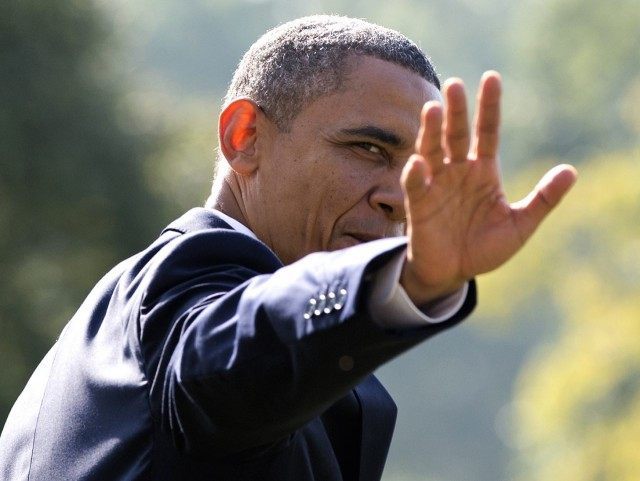President Barack Obama’s 2012 amnesty for “Dreamers”–illegal aliens who entered the United States as children–likely created the conditions under which one of the San Bernardino terrorists could enter the country.
Obama announced his unilateral policy, Deferred Action for Childhood Arrivals (DACA), the “Dream Act by fiat,” in June 2012 after immigration reform activists warned that he could risk losing support from Latino voters in his re-election campaign. Obama infamously broke his promise to pass amnesty in his first term, and risked being outflanked by Republican proposals authored by Sen. Marco Rubio (R-FL) to help “Dreamers” stay in the country.
As Breitbart News reported exhaustively, Obama’s action prompted illegal aliens to flood U.S. Citizenship and Immigration Services (USCIS) with applications for deferred action. In fact, illegal aliens were prioritized above legal immigrants.
As a result, delays in processing applications for legal immigration from relatives of U.S. citizens ballooned to 13 months before the backlog could be brought under control. As even the New York Times noted, families were separated for years because the Obama administration “shifted attention and resources” to illegals.
The crunch had, in fact, been predicted–even by supporters of Obama’s policy. One, Angelo A. Paparelli, wrote at the time:
The task now falls to the Homeland Security Department’s immigration components, U.S. Citizenship and Immigration Services (USCIS) and Immigration and Customs Enforcement (ICE)…
Are they up to the job?
The challenge will be daunting. No new money has been appropriated. Existing agency personnel cannot possibly receive training and handle the workload without a funding mechanism.
Will the applicant tide overwhelm available resources? Can the foreseeable backlogs be avoided? How do those who want deferred action get it, given that DHS has consistently maintained that this act of prosecutorial discretion cannot be requested but must be conferred?
Those applying for K-1 visas–the kind of visa eventually used by terrorist Tashfeen Malik to join husband Syed Farook–also experienced long delays. Those applying through the USCIS California Service Center (CSC) complained: “…it has become clearly evident that there has been an insidious plan at the CSC to maximize the output of the DACA work, solely at the expense of K1 Visa sponsors and beneficiaries like myself and my fiancee.”
Paparelli had written: “Let’s make sure our leaders are forced to shorten the arc.” And they tried, as delays grew: under pressure to process so many people at once, USCIS reportedly began to cut corners.
In October 2012, Sen. Charles Grassley (R-IA) and Rep. Lamar Smith (R-TX) wrote to Janet Napolitano, then-Secretary of the Department of Homeland Security, expressing concern that adjudicators “are being pressured to ‘Get to Yes’.” They were “shocked,” they said, that requests for further evidence from DACA applicants had to be approved by senior officials.
Fast-forward to 2013, when Malik and Farood allegedly met. Malik applied for the K-1 visa through the California USCIS at a time when the office was struggling to wade through the torrent of DACA applications and to reduce backlogs in other areas as well.
Malik’s K-1 application was missing key pieces of information, and made claims that USCIS flagged for additional verification, but there was no follow-up.
House Judiciary Committee chair Bob Goodlatte (R-VA) said Friday that “it is clear that immigration officials did not thoroughly vet [Malik’s] application.”
But it was likely no mere bureaucratic mistake. It was the predictable result of Obama’s amnesty policy.

COMMENTS
Please let us know if you're having issues with commenting.